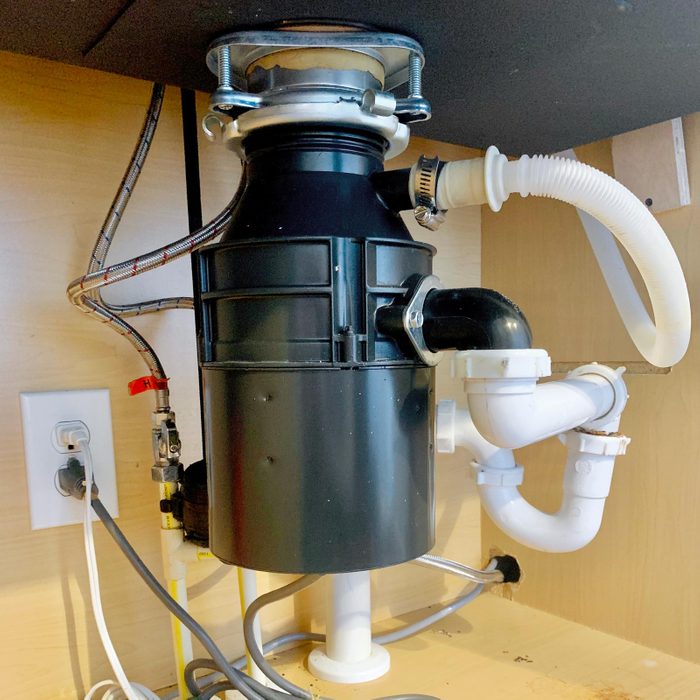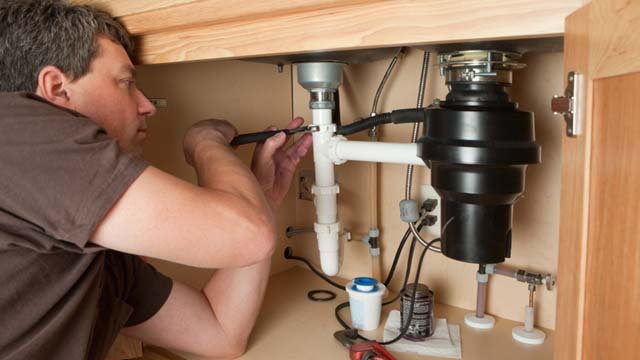Effective Techniques for Repairing a Dripping Garbage Disposal
Effective Techniques for Repairing a Dripping Garbage Disposal
Blog Article
The article down below involving Garbage Disposal Leaking From Bottom is absolutely informative. Don't bypass it.

Waste disposal unit are essential cooking area home appliances that help in getting rid of food waste efficiently. Nonetheless, a leaking waste disposal unit can be a discouraging and messy trouble to take care of. Thankfully, several leaks can be dealt with easily with a couple of simple actions. In this post, we will talk about how to fix a dripping waste disposal unit properly.
Intro
Garbage disposals are set up under kitchen sinks and are made to shred food waste right into smaller pieces, permitting it to go through the plumbing system conveniently. While these gadgets are typically reliable, leaks can happen with time due to wear and tear, loosened links, or damages to the device.
Step-by-Step Guide to Dealing With a Dripping Waste Disposal Unit
Turn Off the Power
Prior to attempting any kind of repair services, guarantee that the power to the garbage disposal unit is switched off to prevent the threat of electric shock.
Locate the Leakage
Determine the exact area of the leak and determine the reason
Tighten Links
Use a wrench to tighten up any type of loosened connections in between the disposal system and the plumbing system.
Replace Seals or Gaskets
If the leakage is because of used seals or gaskets, eliminate the old parts and replace them with new ones.
Patching Splits or Holes
For fractures or openings in the disposal device, use epoxy or an appropriate patching product to secure the damaged area.
Determining the Resource of the Leakage
Before attempting to take care of a dripping waste disposal unit, it is essential to identify the resource of the leak. This can usually be done through aesthetic assessment or by carrying out simple tests.
Visual Assessment
Examine the waste disposal unit system carefully for any kind of indications of water leak. Pay very close attention to areas around seals, gaskets, and connection factors.
Evaluating for Leaks
One method to evaluate for leakages is by running water with the disposal system and checking for any type of visible indicators of leakage.
Typical Root Causes Of Leaks in Waste Disposals
Worn Seals and Gaskets
Seals and gaskets play an important duty in preventing water from leaking out of the waste disposal unit. With time, these elements can degrade, resulting in leaks around the disposal device.
Loose Links
The connections in between the garbage disposal and the plumbing system can come to be loose with time, triggering water to leak out throughout operation.
Fractures or Holes in the Disposal System
Physical damages to the garbage disposal, such as fractures or holes in the housing, can additionally result in leakages.
Devices and Materials Needed for Taking Care Of a Leaking Garbage Disposal
Prior to starting the repair work process, collect the necessary tools and materials, including a screwdriver, flexible wrench, plumber's putty, replacement seals or gaskets, and epoxy or patching material for fixing splits or openings.
Evaluating the Garbage Disposal After Repair Work
As soon as the repair work is full, evaluate the waste disposal unit by running water through it to ensure that the leakage has been settled.
Preventive Maintenance Tips to Stay Clear Of Future Leaks
To prevent future leaks, it is important to perform routine upkeep on your waste disposal unit. This consists of keeping it clean, staying clear of placing non-food things or tough objects down the disposal, and occasionally looking for leaks or other issues.
Final thought
Finally, repairing a dripping waste disposal unit is a relatively straightforward process that can be finished with standard devices and products. By following the steps outlined in this short article and practicing precautionary maintenance, you can maintain your waste disposal unit in good working condition and stay clear of pricey repairs in the future.
HERE’S HOW TO FIX YOUR GARBAGE DISPOSAL
WHAT TO DO IF SOMETHING IS STUCK IN YOUR GARBAGE DISPOSAL
If the impeller won’t turn, there’s probably something stuck in the disposal. It could be a steak bone or peach pit, although plumbers report pulling all sorts of inappropriate objects out of disposals, such as bottle caps or aluminum foil. Make sure power to the disposal is off, and look inside to see if you can see the source of the jam.
Never stick your fingers in a disposal. Pull out anything you see with tongs or pliers.
If the disposal still won’t work, it may be time to call a plumber or consider buying a new disposal. GEM Plumbing & Heating is here for all of your garbage disposal needs.
WHAT TO DO IF YOUR GARBAGE DISPOSAL DRAIN IS CLOGGED
Take everything out from underneath your sink and put a bucket or other container under your disposal to catch any water that drains out. Disconnect your disposal from the power supply. If it’s plugged into a wall outlet, unplug it. If it’s hardwired into an electrical box, go to the electrical panel and turn off the breaker for the disposal. Pour ¼ cup of baking soda into the drain, followed by ½ cup of white vinegar. Give the solution a few minutes to fizz and do its work. Look into the disposal with a flashlight to see if you can see an object that might be causing the clog. If you see it, remove it using tongs or pliers. MORE TIPS ON DEALING WITH A CLOGGED GARBAGE DISPOSAL
Never use drain cleaner in a garbage disposal. It can damage the plastic parts inside the disposal. You can also be splashed with the caustic liquid while working to clear the clog. Beware! Never stick your fingers into a garbage disposal. Trust us — not a good idea. In many instances, your dishwasher drains through your garbage disposal. This allows the disposal to grind any large food particles that may be drained out of your dishwasher. There are some jurisdictions, however, where the plumbing code prohibits such a connection. WHAT TO DO WHEN YOUR DISHWASHER DRAINS THROUGH THE DISPOSAL
Run some water in the sink so your plunger has at least a ½-inch of water to create a seal and plunge vigorously up and down several times. You may need to repeat this several times. Run hot water down the drain to clear any residue that remains.

As an avid person who reads about How to fix a pretty consistent leak from my garbage disposal, I think sharing that piece of content was really useful. Be sure to set aside a second to share this article if you enjoyed reading it. Thanks for going through it.
Click Report this page